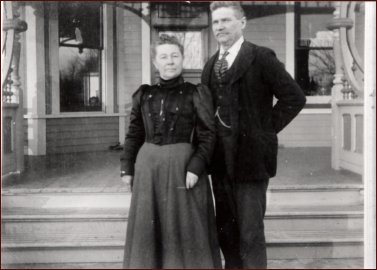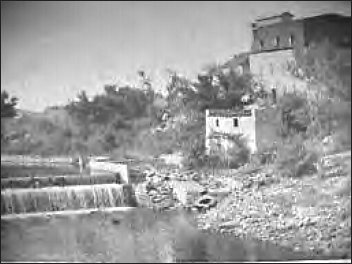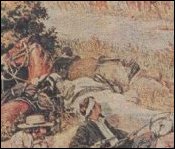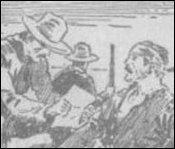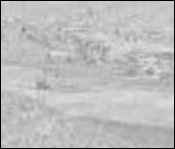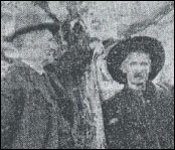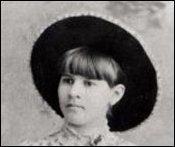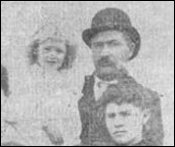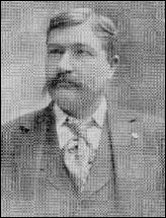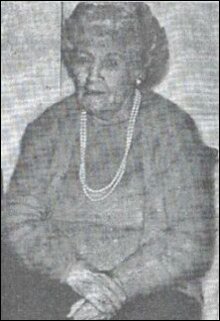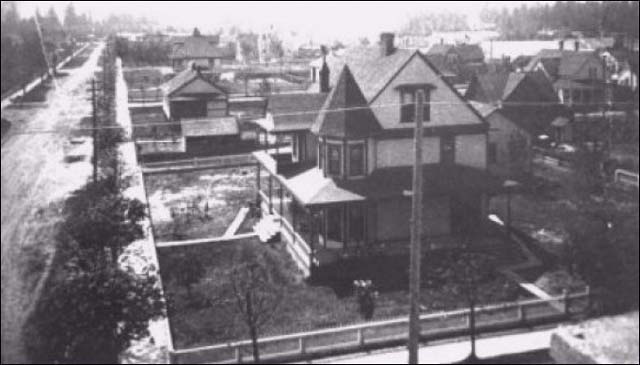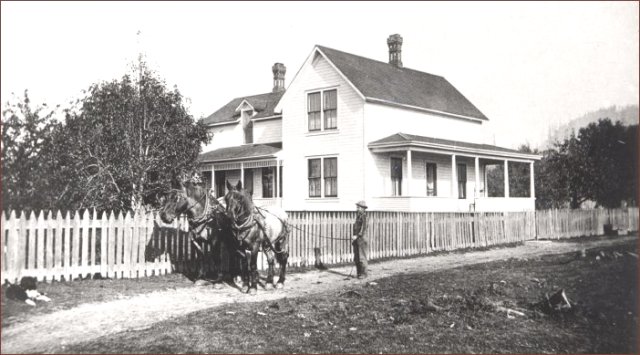This photo of the mansion is in many collections around town. It shows the Green home across the alley to the left, and if you look to the right, behind the outbuilding and a dark house, you will see the Hegg home across Warner Street. Emerson added a special feature, a covered walkway bathed in flowers that he kept Isabel dry when she had to walk to the privy at the end of the lot on cold, rainy days.
Across Warner Street, you can see the top of another early mansion, also three stories like the Hammer home, one only three such houses of that height in the whole town. That home at the southwest corner of Warner and Fourth streets dates back to the early 1890s, along with the Devin and Bingham mansions across Fourth Street to the east. It was built by Ben Vandeveer, a Klondike gold miner who built in 1898 what became known as the B&A Buffet Saloon, which stood downtown at the corner of Metcalf and State streets where Interwest Savings stands now. Sedro pioneer Ad Davison bought that house in an unknown year. He and his wife, Betsey (Firth), daughter of one of the earliest San Juan Island pioneer families, raised ten children there. Ad's granddaughter, Jean Fahey Lisherness married Norm Lisherness, a Lyman native who became the Sedro-Woolley police chief in the 1950s. They lived in the house from the late 1940s on. Norm died during the Fourth of July parade of 1967 and Jean continued living there until her death in 2005. Their son Tom now owns the home.
You can see that the then-unpaved 4th street stretched south to the horizon at the slope down to the river bottom lands. Fourth originally did not extend through the 900 block and south. Banker C.E. Bingham's wife Julia wanted a rose garden there in the 1000 block and didn't give up the throughway until a few years before this photo was taken.
|

 810 Central Ave.,
810 Central Ave., 